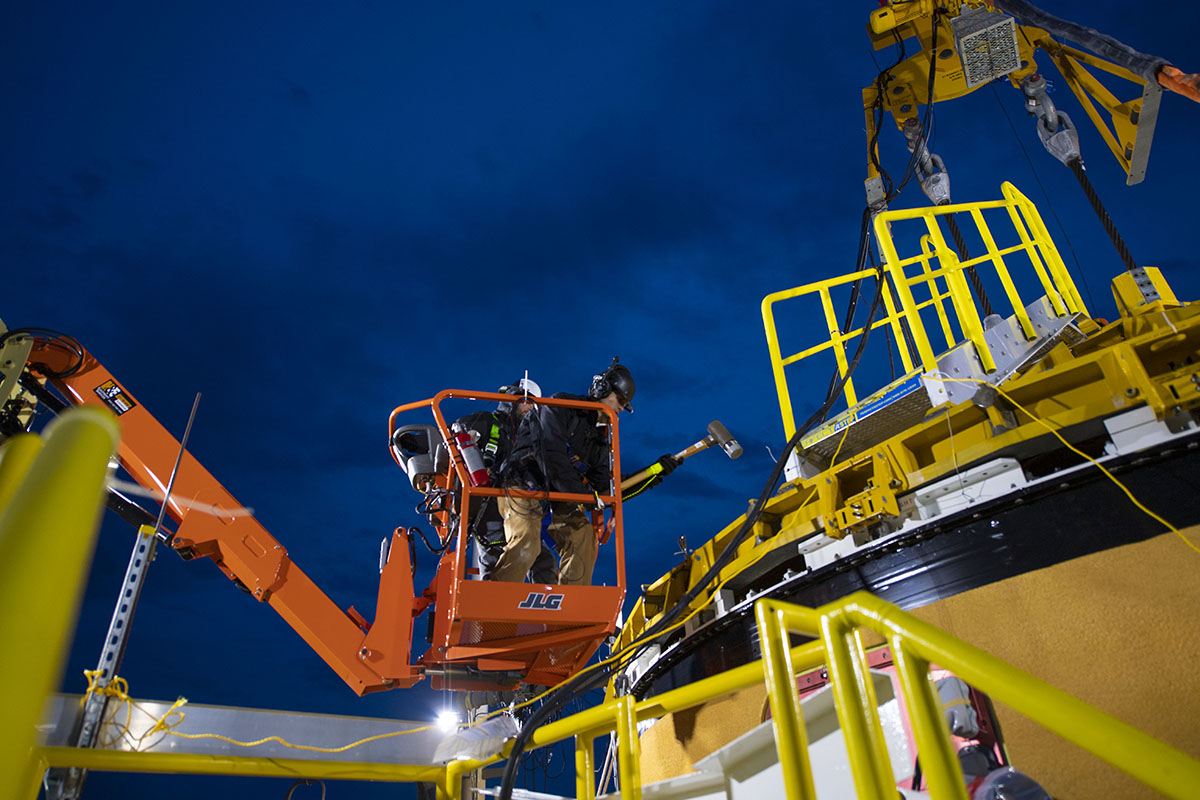 Washington, D.C. – NASA is resuming work on a series of tests to bring the Space Launch System (SLS) rocket core stage to life for the first time, allowing engineers to evaluate the new complex stage that will launch the Artemis I lunar mission.
Washington, D.C. – NASA is resuming work on a series of tests to bring the Space Launch System (SLS) rocket core stage to life for the first time, allowing engineers to evaluate the new complex stage that will launch the Artemis I lunar mission.
In January, engineers began activating the stage’s components one by one over several months through a series of initial tests and functional checks designed to identify any issues. Those tests and checks collectively called Green Run will culminate in a test fire replicating the stage’s first flight.

“Green Run is the step-by-step testing and analysis of the new SLS rocket core stage that will send astronauts to the Moon,” said Richard Sheppard, the SLS Stages Green Run Test Lead from NASA’s Marshall Space Flight Center in Huntsville, Alabama.
“This testing will reduce risks for, not only the first flight, but also for the Artemis mission that will land astronauts on the Moon in 2024,” Sheppard stated.
The Green Run test series, conducted in the historic B-2 Test Stand at NASA’s Stennis Space Center near Bay St. Louis, Mississippi, is a collaborative effort between the SLS program, the Stennis test team, core stage manufacturer Boeing and engine manufacturer Aerojet Rocketdyne. On March 18th, work was temporarily suspended on Green Run when Stennis Space Center went to Stage 4 on the Agency Response Framework in response to a rise in COVID-19 Coronavirus cases in the area near Stennis.
Prior to pausing test operations, engineers completed the modal test, the first of the eight tests in the Green Run series, to understand the vibration charateristics of the core stage. Now, work is slowly and methodically starting back, as workers return to prepare the facility and resume testing.

“The team connected the facility with the rocket earlier this year, both electrically and mechanically,” said Ryan McKibben, Green Run test conductor at Stennis. “We are now preparing for the second test, which will power on the vehicle’s avionics and the three computers that control the rocket’s flight as it soars into space.”
The avionics are distributed throughout the stage. Engineers at Marshall designed software similar to the flight software for Green Run. A special stage controller will be used to simulate the Launch Control Center operations that will control the actual launch at Kennedy Space Center in Florida.
“The core stage avionics along with Green Run software have successfully completed tests in our test laboratories at Marshall, said Lisa Espy, the core stage avionics lead at Marshall. “I am excited to see the flight systems come to life that will control the rocket as it sends the first Artemis mission to the Moon.”
Green Run tests minimize risk to the core stage and ensure the stage satisfies design objectives and validates design models:
- Test 1- Modal Test: The first test in the Green Run series, a modal test was conducted in January. This test used shakers to impart dynamic forces on the suspended stage to identify primary bending modes of the stage. Information from the modal test will help engineers verify vehicle models needed for the operation of the rocket’s guidance, navigation and control systems.
- Test 2- Avionics: The rocket’s avionics, which are distributed throughout the stage, will be turned on and checkout out. This includes not only flight computers and electronics that control the rocket but also those that collect flight data and monitor the overall health of the core stage.
- Test 3- Fail-Safes: Engineers will check out all the safety systems that shut down operations during testing. To do this, they will simulate potential issues.
- Test 4- Propulsion: This will be the first test of each of the main propulsion system components that connect to the engines. Command and control operations will be verified, and the core stage will be checked for leaks in fluid or gas.
- Test 5- Thrust Vector Controls: Engineers will ensure that the thrust vector control system can move the four engines and check all the related hydraulic systems.
- Test 6- Countdown: This test simulates the launch countdown, including step-by-step fueling procedures. Core stage avionics are powered on, and propellant loading and pressurization are simulated. The test team will exercise and validate the countdown timeline and sequence of events.
- Test Case 7- “Wet” Dress Rehearsal: Engineers will demonstrate loading, controlling and draining more than 700,000 gallons of cryogenic propellants into the two test stand run tanks and then returning the stage to a safe condition.
- Test Case 8- Hot Fire: The core stage’s four RS-25 engines will operated for up to 8 minutes, generating 1.6 million pounds of thrust, the amount of thrust the engines produce at sea level on the launch pad at liftoff.
After the hot fire test, engineers will refurbish the core stage and configure it for its journey to Kennedy for launch preparations. The next time the RS-25 engines fire, the SLS will launch in an epic debut of Artemis I — the first in a series of increasingly complex missions that will enable human exploration to the Moon and Mars.




